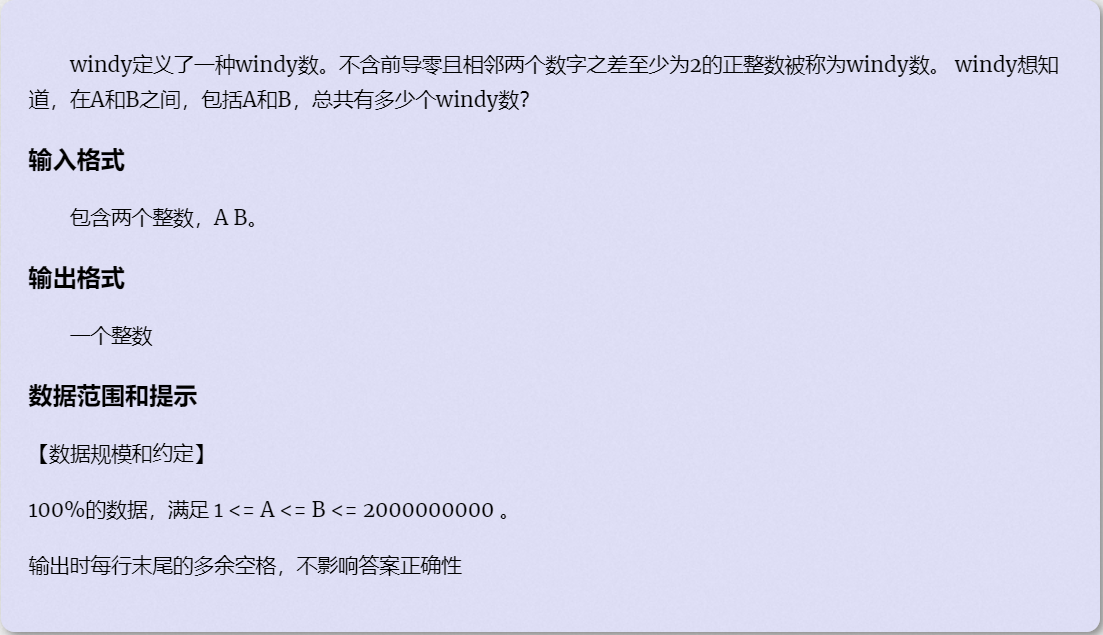题目:


考察点:
数位 DP
数位DP 的板子戳这里:
https://www.cnblogs.com/prjruckyone/category/1754376.html
侃侃:
这道题与模板只有一点点稍微的不同,还需要判段一下 前导 0
因为我们是从高位开始枚举的,枚举到最后可能会出现这样的情况
0004,显然这个数不是 Windy 数,但是我们可以看到 0 和 4 相差
是 >= 2 的,所以如果不判断前导 0 的话就会出现多加的情况,其他
的和模板类似。
Code:
#include <cstdio>
#include <string>
#include <cmath>
#include <cstring>
#include <iostream>
#include <algorithm>
using namespace std;
const int maxn = 25;
typedef long long LL;
LL dp[maxn][maxn],a[maxn];
LL l,r;
LL DFS(int pos,int st,bool limit,bool lead) {
if(pos == -1) return 1;
// 如果上一位不是最高位并且上一位不是前导 0
if(!limit && !lead && dp[pos][st] != -1) return dp[pos][st];
LL res = 0;
int up = limit?a[pos]:9;
for(int i = 0; i <= up; i ++) {
if(abs(i - st) < 2 && !lead) {
continue;
}
res += DFS(pos - 1,i,limit && (i == a[pos]),lead && i == 0);
}
if(!limit && !lead) dp[pos][st] = res;
return res;
}
LL solve(LL x) {
int len = 0;
while(x) {
a[len ++] = x % 10;
x /= 10;
}
// 刚开始肯定是没有前导 0 的,并且是最高位
return DFS(len - 1,0,1,1);
}
int main(void) {
memset(dp,-1,sizeof(dp));
scanf("%lld%lld",&l,&r);
printf("%lld
",solve(r) - solve(l - 1));
return 0;
}
后记:
DP 博大精深,目前了解的只是皮毛,DP 确实不好搞啊啊啊!